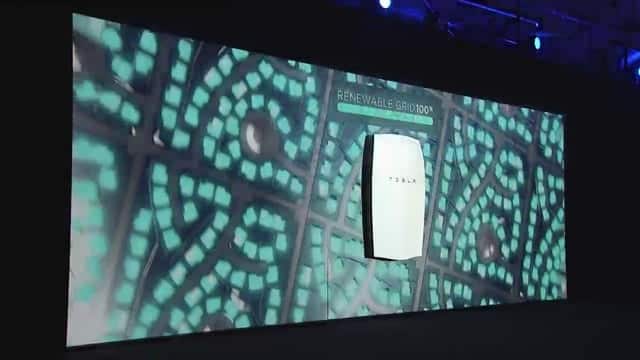Tesla Motors, an electronic car manufacturer based out of Palo Alto California, has come up with a rechargeable lithium ion battery with liquid thermal control that can store solar energy and release it when required.
The new battery, or Powerwall as it’s called, will range in price from $3000 US to $3500 US. It will be functional in extreme temperatures, between -4°F to 110°F or -20°C to 43°C , and it comes in two models: a 10 kWh model, and a 7kWh model. A kWh or kilowatt-hour is the most common unit of measuring electricity consumption; it is the equivalent of using 1000 watts of electricity in an hour. Tesla is also offering a 10 year warranty for the Powerwall which is a strong display of confidence in the machine. The official website for the Powerwall states: “Powerwall is a home battery that charges using electricity generated from solar panels, or when utility rates are low, and powers your home in the evening. It also fortifies your home against power outages by providing a backup electricity supply.
Automated, compact and simple to install, Powerwall offers independence from the utility grid and the security of an emergency backup.” This statement may seem appealing at first glance, but it doesn’t necessarily mean it’s true; for a home to be completely “Off the grid” it would require an enormous amount of power to be produced and stored by the Powerwall, which would cause an increase in the price.
The main goal for the Powerwall will be to offer affordable power to houses that don’t have a reliable electrical grid. As most houses in the Western world have access to a reliable power grid, the Powerwall obviously won’t be for everyone. Currently at the price it is selling for, a Tesla Powerwall may cut hydro costs for a homeowner depending on how much they are paying for hydro. However, a Powerwall must be installed to by a trained electrician. Therefore, when you factor in these additional fees the price could go from $3000-$3500 to $6000 and up. What really makes the Powerwall intriguing is: it offers a larger model for businesses to use instead of a backup generator in the event of a power outage. This could become incredibly efficient for businesses or buildings that can’t afford to experience extended power outages, such as hospitals or movie theaters. However, Tesla has yet to release the price for these larger, industrial size, batteries.
The biggest thing to look at when considering purchasing a Powerwall for your home is the price for every kilowatt-hour that is stored and then later used. The price for every kWh with the Powerwall is around $0.35 while the average grid price in California is around $0.12 normally, and $0.28 at peak hours. This means that a Powerwall is still more expensive than using a grid exclusively. If you are on a reliable grid a Powerwall might not be a fiscally responsible purchase. However, for houses that don’t have a reliable power grid, or are paying higher-than-average hydro prices, a Powerwall may be able to help cut costs.
Realistically the Powerwall doesn’t look like it’s ready to replace a power grid and become the main source of power for individual houses at this point in time. However, it could be a viable, or at the very least intriguing, option for business that can’t afford to experience power outages.










